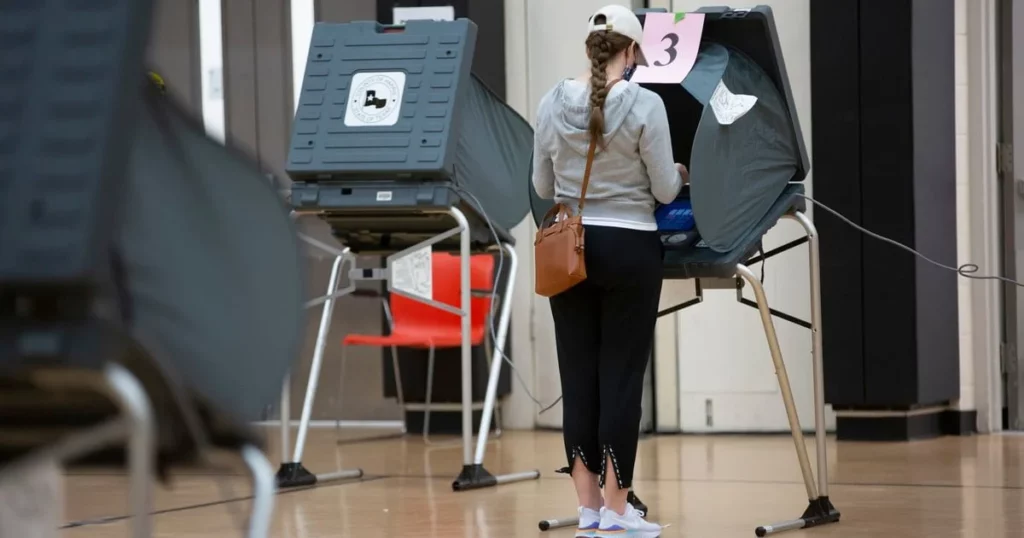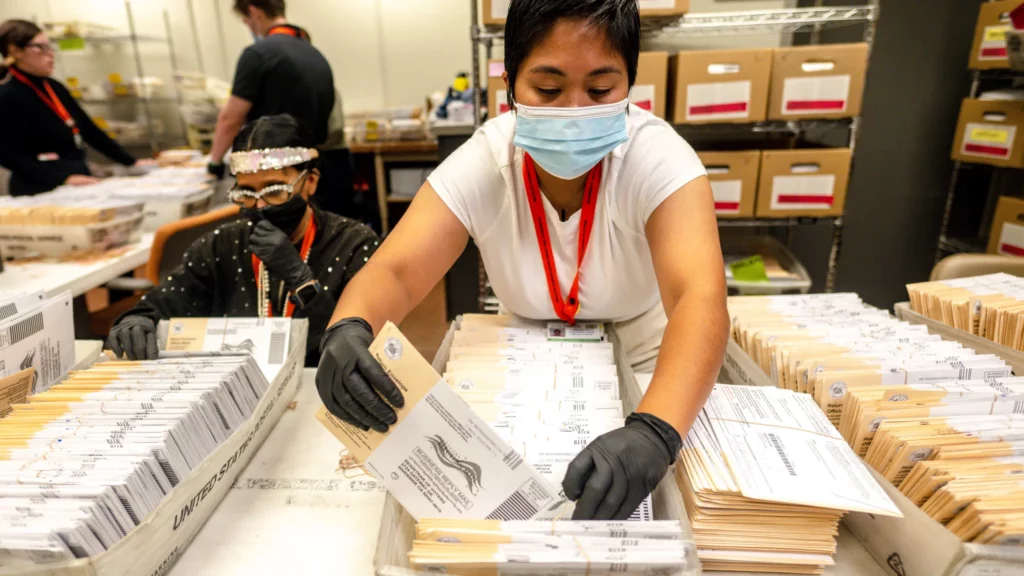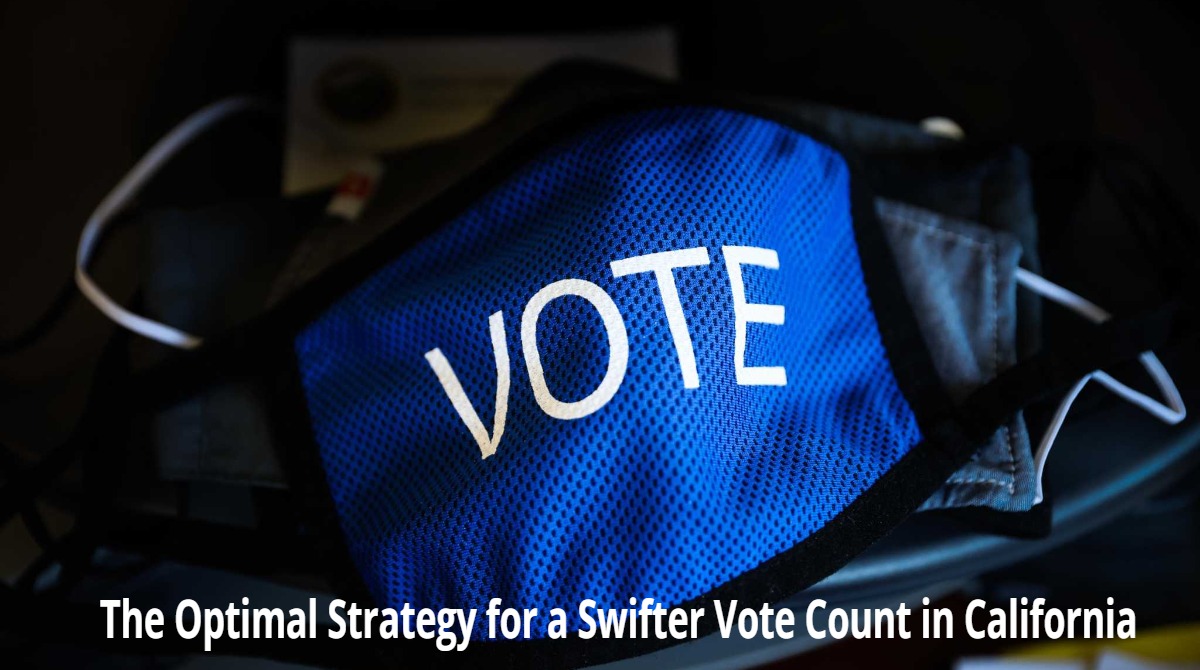The US House of Representatives is still under their control. Uncertain for more than a week following the election on November 8. When the Associated Press predicted victory for Rep. Mike Garcia in his Los Angeles-area district on Wednesday. All eyes had turned to the Several races in California that went uncalled. Giving Republicans a slim majority in the new Congress. giving Republicans a narrow majority in the new Congress.
Political commentators from all over the country. Once more criticized California’s lengthy voting process as tense days passed without a resolution, and conservatives raised concerns. That late-arriving ballots and slow results would reveal Democratic attempts to steal close races.

In reality, the lengthy count will take a month to complete. It is due to California’s switch to a system of mail-in ballots, which, while convenient, necessitates. Additional steps of verification by local officials once the ballots arrive.
Although California election experts claim. There are several potential ways the state could quicken the count. There is little need to give them top priority. The waiting game appears to be here to stay as policymakers concentrate instead on enhancing accessibility, participation, and security.
Democracy is not intended as an efficient system. According to state senator Steve Glazer. A Democrat from Orinda who chairs the elections committee in the Senate, every voter’s vote counts. According to him, ensuring the accuracy and integrity of the results comes before instant answers.
Glazer continued that no one had ever expressed genuine worries to him about the speed of the vote-counting process.
According to Glazer, the current hysteria spread by some is a bunch of bunk that advances their ideological goals at the expense of public confidence in our democracy. Is there a way to make it go more quickly? I’d say there is. Is it worth the cost, the price?
Mail ballots delay the results.
The slow release of election results in California due to daily updates results from changes in voting behavior over the previous 20 years. When the coronavirus pandemic hit in 2002, the state’s no-excuse absentee voting program evolved into a system where every registered voter receives a ballot in the mail. A law passed last year and made permanent by Governor Gavin Newsom.

Some experts point to additional factors, such as California’s enormous size and independent redistricting process, resulting in more competitive races with slower outcomes.
However, mail-in ballots, which, compared to votes cast at a polling place on election day, take longer to count, ultimately determine the timeline.
According to a recent study by the nonprofit California Voter Foundation, Almost 81 percent of votes were counted within two days of election day in November 2004, when less than a third of voters cast mail-in ballots. Contrarily, in the June primary this year, Less than half of the mail-in ballots cast by more than 91% of voters were counted within two days of the election.
County election offices had approximately 9.2 million votes as of 10 a.m. today, but there were still nearly 1.7 million ballots to be processed.
The causes are not sinister. Before counting a mail-in ballot, local election officials check the voter’s signature and make sure they haven’t already voted elsewhere. California allows voters to correct missing or inconsistent signatures on their ballots. It accepts ballots postmarked by election day that arrive up to a week later to reduce the number of invalid votes for procedural reasons. Election offices also manually recount 1% of the ballots before certification as part of an internal audit.
The state’s chief elections officer, Secretary of State Shirley Weber, said in a statement on Tuesday: We have a large number of register voters, and California places a strong emphasis on enfranchisement. So we have a procedure that is required by law to guarantee both the right to vote and the fairness of elections.” “I’d ask everyone to exercise patience.”
Weber, not made available for an interview by her office. However, spokeswoman Joe Kocurek stated that since the count is still in progress. “It’s too soon for us to determine whether any changes are required,”
However, the protracted process contributed to a widening partisan gap in confidence in elections. That fuels by rumors from former President Donald Trump that the 2020 election rigged against him.
Republicans in California, according to a UC Berkeley Institute of Governmental Studies poll conducted in October. It holds this view more strongly than evenly divided Democrats. Republican respondents were overwhelmingly concerned. About people voting illegally or attempting to rig the results. More than half said they had no faith in the machine tallying of ballots.
President of the California Voter Foundation Kim Alexander. Which campaigns to improve election administration and access to voting. It said: “The ironic thing is that the people. Who is making claims questioning the integrity of Mail ballots? It takes a long time to count because we are ensuring the security of the vote, but because of the lengthy vote counts, our election results are ignoring this fact.

However, she argued that California should work to expedite. The procedure to deal with the perception of mismanagement. The barrage of election officials, who are vulnerable to abuse because of this, have been quitting their jobs at alarming rates — as a result of the perceived wrongdoing.
According to Alexander, “confidence in elections is about people having confidence based on both what is happening and what they perceive is happening.” “Perception is crucial.”

